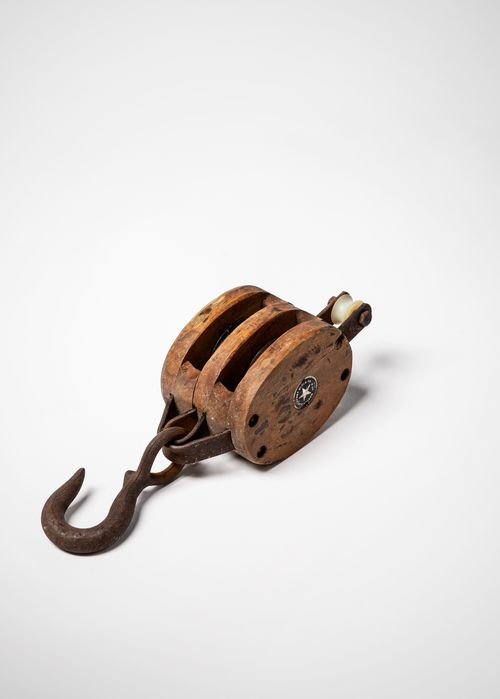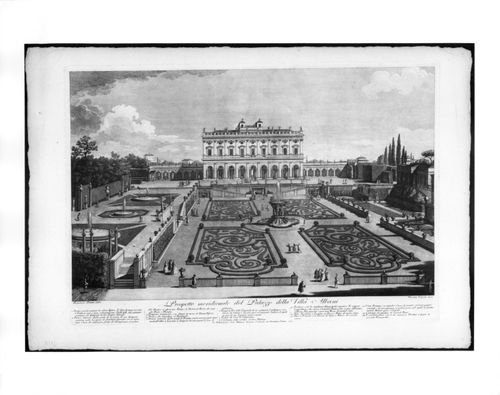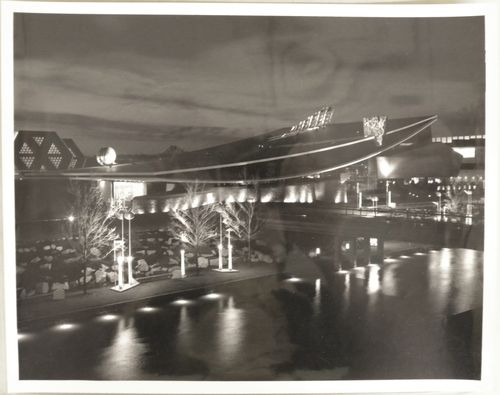documents textuels
Postcards
AP197.S4.004
Description:
This box contains postcards that Frampton collected over the years. Postcards depict various images such as buildings, cityscapes, sculptures, skylines, interiors, nature, paintings, people, architecture drawings, maps and more.
circa 1965-2015
Postcards
Actions:
AP197.S4.004
Description:
This box contains postcards that Frampton collected over the years. Postcards depict various images such as buildings, cityscapes, sculptures, skylines, interiors, nature, paintings, people, architecture drawings, maps and more.
documents textuels
circa 1965-2015
documents textuels
Postcards
AP197.S4.005
Description:
This box contains postcards that Frampton collected over the years. Postcards depict various images such as buildings, cityscapes, sculptures, skylines, interiors, nature, paintings, people, architecture drawings, maps and more.
circa 1965-2015
Postcards
Actions:
AP197.S4.005
Description:
This box contains postcards that Frampton collected over the years. Postcards depict various images such as buildings, cityscapes, sculptures, skylines, interiors, nature, paintings, people, architecture drawings, maps and more.
documents textuels
circa 1965-2015
documents textuels
Postcards
AP197.S4.006
Description:
This box contains postcards that Frampton collected over the years. Postcards depict various images such as buildings, cityscapes, sculptures, skylines, interiors, nature, paintings, people, architecture drawings, maps and more.
circa 1965-2015
Postcards
Actions:
AP197.S4.006
Description:
This box contains postcards that Frampton collected over the years. Postcards depict various images such as buildings, cityscapes, sculptures, skylines, interiors, nature, paintings, people, architecture drawings, maps and more.
documents textuels
circa 1965-2015
dessins
DR2012:0012:013
Description:
Includes studies, plans, details and elevations for the project Place des Moulins, Esplanade Frontenac, Sherbrooke, Québec. Material was originally housed in a tube labelled "Shrebrooke - Place de Moulins Sculptures - Des Originaux".
2003
Studies, plans, details and elevations for the project Place des Moulins
Actions:
DR2012:0012:013
Description:
Includes studies, plans, details and elevations for the project Place des Moulins, Esplanade Frontenac, Sherbrooke, Québec. Material was originally housed in a tube labelled "Shrebrooke - Place de Moulins Sculptures - Des Originaux".
dessins
2003
PHCON2002:0016:070
Description:
Pulley represents half of Gordon Matta-Clark's block & tackle. It was used by Matta-Clark on almost all of his sculptures from Splitting (1974) through to Day's End (1975) and Office Baroque (1977).
before 1970s
Gordon Matta-Clark's Wooden Pulley
Actions:
PHCON2002:0016:070
Description:
Pulley represents half of Gordon Matta-Clark's block & tackle. It was used by Matta-Clark on almost all of his sculptures from Splitting (1974) through to Day's End (1975) and Office Baroque (1977).
Série(s)
OCEAN reference files
AP194.S2
Description:
Series consist of records associated with different projects devised by OCEAN and OCEAN North prior to 1999 and retained as reference material by Johan Bettum, who did not collaborate on every project. Records occasionally include some photographs, but for the most part are images from work done with CAD software. These include plans, diagrams, renderings and views (sections, perspectives) of buildings, landscapes, exhibition scenography, and exhibited items. The amount and type of materials varies largely between projects. Files were transferred to CCA on a CD and their timestamps suggests that materials were copied for reference purpose in the first few months of 1998. The CD cover bears the date of June 3rd 1999. Projects date from 1994 to 1998. Projects included in the reference files are: Barbican, London (OCEAN Helsinki): likely an exhibition design. Museum, Buenos Aires (OCEAN U.K., 1997): a building design for a competition. Finnish Embassy, Canberra (OCEAN Oslo & Helsinki, 1996): an international architectural competition entry. Helsinki Nightclub (OCEAN Helsinki): a building design. Jeil’s Hospital, Seoul (OCEAN U.K., 1996): a building design. Jyväskylä Music and Arts Center (OCEAN Oslo & Helsinki, 1997): an international architectural competition entry. See also Series 1 for more records on this project. Lasipalatsi Media Square (OCEAN U.K.): a landscape design. Synthetic Landscape I-II, Oslo (OCEAN Oslo, 1995-1996): a landscape design. See also Series 1 for more records on this research project. Surfscape, Helsinki (OCEAN Helsinki, 1997): sculpture for an exhibition. Töölö Football Stadium, Hels. (OCEAN Oslo & Helsinki, 1997): an international architectural competition entry. See also Series 1 for more records on this project. Urban Surfaces, Oslo (OCEAN, 1997-1998): photographs of an exhibition. Source: Ateljié Sotamaa. “Portfolio.” Accessed November 2017, http://portfolio.sotamaa.net/ OCEAN design Research Association, “Exhibitions.” Accessed November 2017, http://www.ocean-designresearch.net/index.php/exhibitions-mainmenu-120/list-of-exhibitions FRAC, “Catalog, OCEAN.” Accessed November 2017, http://www.archilab.org/public/2000/catalog/ocean/oceanen.htm OCEAN CN Consultancy Network, “Projects.” Accessed November 2017, http://ocean-cn.org/projects/
1998
OCEAN reference files
Actions:
AP194.S2
Description:
Series consist of records associated with different projects devised by OCEAN and OCEAN North prior to 1999 and retained as reference material by Johan Bettum, who did not collaborate on every project. Records occasionally include some photographs, but for the most part are images from work done with CAD software. These include plans, diagrams, renderings and views (sections, perspectives) of buildings, landscapes, exhibition scenography, and exhibited items. The amount and type of materials varies largely between projects. Files were transferred to CCA on a CD and their timestamps suggests that materials were copied for reference purpose in the first few months of 1998. The CD cover bears the date of June 3rd 1999. Projects date from 1994 to 1998. Projects included in the reference files are: Barbican, London (OCEAN Helsinki): likely an exhibition design. Museum, Buenos Aires (OCEAN U.K., 1997): a building design for a competition. Finnish Embassy, Canberra (OCEAN Oslo & Helsinki, 1996): an international architectural competition entry. Helsinki Nightclub (OCEAN Helsinki): a building design. Jeil’s Hospital, Seoul (OCEAN U.K., 1996): a building design. Jyväskylä Music and Arts Center (OCEAN Oslo & Helsinki, 1997): an international architectural competition entry. See also Series 1 for more records on this project. Lasipalatsi Media Square (OCEAN U.K.): a landscape design. Synthetic Landscape I-II, Oslo (OCEAN Oslo, 1995-1996): a landscape design. See also Series 1 for more records on this research project. Surfscape, Helsinki (OCEAN Helsinki, 1997): sculpture for an exhibition. Töölö Football Stadium, Hels. (OCEAN Oslo & Helsinki, 1997): an international architectural competition entry. See also Series 1 for more records on this project. Urban Surfaces, Oslo (OCEAN, 1997-1998): photographs of an exhibition. Source: Ateljié Sotamaa. “Portfolio.” Accessed November 2017, http://portfolio.sotamaa.net/ OCEAN design Research Association, “Exhibitions.” Accessed November 2017, http://www.ocean-designresearch.net/index.php/exhibitions-mainmenu-120/list-of-exhibitions FRAC, “Catalog, OCEAN.” Accessed November 2017, http://www.archilab.org/public/2000/catalog/ocean/oceanen.htm OCEAN CN Consultancy Network, “Projects.” Accessed November 2017, http://ocean-cn.org/projects/
Series
1998
DR1984:0577
Description:
- This print shows a view of the palace, or casino, of the Villa Albani overlooking the terraces, fountains and parterres of the garden. The classical garden façade of the casino is two storied and comprised of nine bays. The first story has an open loggia articulated by a double Order in the manner of Michelangelo's Palazzo dei Conservatori. On the roof sits a rectangular open-air belvedere with a small pavilion in each of its four corners. To either side of the casino stretch one-storied wings, or galleries, each terminating in a classizing temple front turned to face one another across the garden façade of the casino. Various pieces of antique sculpture are located at different points throughout the garden.
architecture, architecture de paysage, topographique
published 1780
A view of the casino and gardens of the Villa Albani
Actions:
DR1984:0577
Description:
- This print shows a view of the palace, or casino, of the Villa Albani overlooking the terraces, fountains and parterres of the garden. The classical garden façade of the casino is two storied and comprised of nine bays. The first story has an open loggia articulated by a double Order in the manner of Michelangelo's Palazzo dei Conservatori. On the roof sits a rectangular open-air belvedere with a small pavilion in each of its four corners. To either side of the casino stretch one-storied wings, or galleries, each terminating in a classizing temple front turned to face one another across the garden façade of the casino. Various pieces of antique sculpture are located at different points throughout the garden.
architecture, architecture de paysage, topographique
Sous-série
Education
CI001.S2.D1
Description:
Like his father Hubert, Charles Rohault de Fleury also studied at the École polytechnique with Jean-Nicolas-Louis Durand (1820-1821), and at the École des Beaux-Arts (1823-1825), Charles studied under his father and Louis Hippolyte Lebas. The CCA collection contains his printed exercise book from the École polytechnique and an album of drawings of the orders executed at both schools. The printed exercise book (DR1974:0002:001:001-105), primarily dated to 1821, provides an overview of the first year curriculum at the École polytechnique reflecting the emphasis placed on the course in descriptive geometry. The exercises proceed from the simple to the complex; from the analysis of simple shapes to the interpretation of basic architectural elements. Many of the problems have been solved by Charles, and carry the approval seal of his professor. A large engraving included in the album provides a succinct table recording the career paths of graduating students in the various Écoles d'application, a description of the core curriculum, and a historical and chronological outline of the École polytechnique from its inception to 1828. Charles' studies of the architectural orders (DR1974:0002:019:001-033), many of which are copied directly from Charles Normand's 'Nouveau parallele des ordres d'architecture...,' demonstrate the continued application of Durand's methodology applied to typical Beaux-Arts studies. The orders executed at the École polytechnique are pared down to their essential form and porticos are abstracted and grouped according to their tetrastyle, hexastyle, or octastyle configurations, whereas the orders completed at the École des beaux-arts are simplified, but still reflect the traditional mimetic interpretation of classical antiquity, with its fidelity to mouldings and details. The conspicous abscence of the composite order and the addition of the 'Dorique Romain and Moderne', attest to the continued influence of Durand's ''Precis'. The information regarding George's architectural career is limited to twelve drawings for architectural ornament and sculpture (1858-1859) submitted to a newly introduced, and obligatory, 'dessin' Concours d'emulation at the École des beaux-arts (1). (1) R. Chaffe, "The teaching of architecture at the École des Beaux-Arts" in Arthur Drexler ed., 'The Architecture of the École des Beaux-Arts' (New York: MOMA, 1975), p.84 and fn. 120.)
[1776?]-1868
Education
CI001.S2.D1
Description:
Like his father Hubert, Charles Rohault de Fleury also studied at the École polytechnique with Jean-Nicolas-Louis Durand (1820-1821), and at the École des Beaux-Arts (1823-1825), Charles studied under his father and Louis Hippolyte Lebas. The CCA collection contains his printed exercise book from the École polytechnique and an album of drawings of the orders executed at both schools. The printed exercise book (DR1974:0002:001:001-105), primarily dated to 1821, provides an overview of the first year curriculum at the École polytechnique reflecting the emphasis placed on the course in descriptive geometry. The exercises proceed from the simple to the complex; from the analysis of simple shapes to the interpretation of basic architectural elements. Many of the problems have been solved by Charles, and carry the approval seal of his professor. A large engraving included in the album provides a succinct table recording the career paths of graduating students in the various Écoles d'application, a description of the core curriculum, and a historical and chronological outline of the École polytechnique from its inception to 1828. Charles' studies of the architectural orders (DR1974:0002:019:001-033), many of which are copied directly from Charles Normand's 'Nouveau parallele des ordres d'architecture...,' demonstrate the continued application of Durand's methodology applied to typical Beaux-Arts studies. The orders executed at the École polytechnique are pared down to their essential form and porticos are abstracted and grouped according to their tetrastyle, hexastyle, or octastyle configurations, whereas the orders completed at the École des beaux-arts are simplified, but still reflect the traditional mimetic interpretation of classical antiquity, with its fidelity to mouldings and details. The conspicous abscence of the composite order and the addition of the 'Dorique Romain and Moderne', attest to the continued influence of Durand's ''Precis'. The information regarding George's architectural career is limited to twelve drawings for architectural ornament and sculpture (1858-1859) submitted to a newly introduced, and obligatory, 'dessin' Concours d'emulation at the École des beaux-arts (1). (1) R. Chaffe, "The teaching of architecture at the École des Beaux-Arts" in Arthur Drexler ed., 'The Architecture of the École des Beaux-Arts' (New York: MOMA, 1975), p.84 and fn. 120.)
File 1
[1776?]-1868
ARCH255963
Description:
"Le Pavillon de l'Italie à l'Expo 67 ----- En terme d'architecture, le toit du pavillon est une voile couchée. Le Pavillon entier semble flotter dans l'air. Sur le toit, trois sculptures symbolisent les trois secteurs d'exposition du Pavillon: la Poésie, les Moeurs et le Progrès. / Italian pavilion at Expo....... the most outstanding architectural feature of the Italian pavilion is its sloping roof which soars independent of the underlying structures. Three symbolic sculptures which also summarize the whole interior exhibit stand in full view upton the roof."--Description.
1967?
Night view of the Pavilion of Italy with its scupltures on roof, Expo 67, Montréal, Québec
Actions:
ARCH255963
Description:
"Le Pavillon de l'Italie à l'Expo 67 ----- En terme d'architecture, le toit du pavillon est une voile couchée. Le Pavillon entier semble flotter dans l'air. Sur le toit, trois sculptures symbolisent les trois secteurs d'exposition du Pavillon: la Poésie, les Moeurs et le Progrès. / Italian pavilion at Expo....... the most outstanding architectural feature of the Italian pavilion is its sloping roof which soars independent of the underlying structures. Three symbolic sculptures which also summarize the whole interior exhibit stand in full view upton the roof."--Description.
dessins
DR2012:0012:046:013
Description:
Includes and plans and details for Place des Moulins, Esplanade Frontenac, Sherbrooke,Québec, 2003. One plan is titled "Sherbrooke/Cité des Rivières/La Place: Installation - Plan d'implantation", and the roll is labelled "Sherbrooke Sculptures Detail 2003".
2003
Plans and details, Place des Moulins, Esplanade Frontenac, Sherbrooke, Québec
Actions:
DR2012:0012:046:013
Description:
Includes and plans and details for Place des Moulins, Esplanade Frontenac, Sherbrooke,Québec, 2003. One plan is titled "Sherbrooke/Cité des Rivières/La Place: Installation - Plan d'implantation", and the roll is labelled "Sherbrooke Sculptures Detail 2003".
dessins
2003


